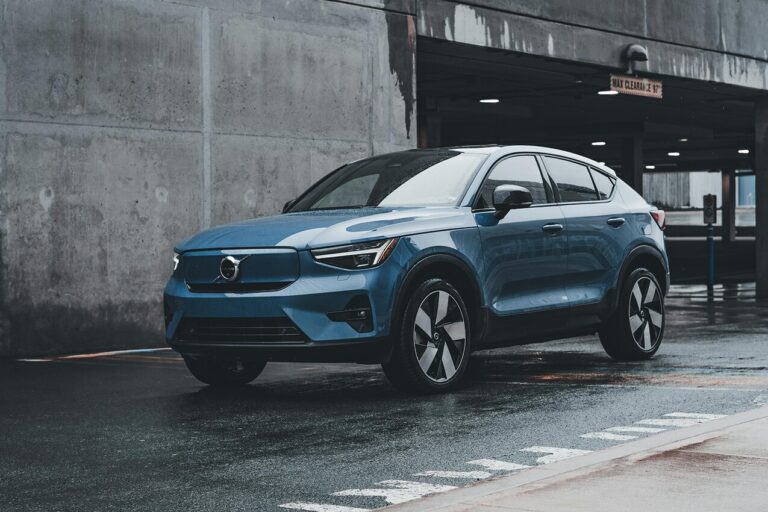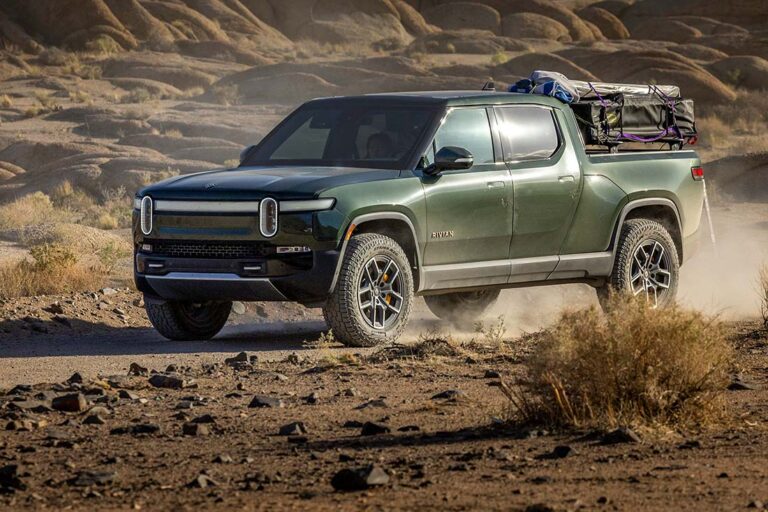There was a time when the idea of a car running on anything other than petrol sounded like science fiction. Yet here we are, with electric vehicles silently gliding past fuel stations with what can only be described as a smug sense of superiority. But how did we get here?
The history of electric vehicles isn’t just about zero-emission eco-warriors saving the planet. It’s a tale filled with early triumphs, dramatic failures, and an epic comeback that would make Rocky Balboa jealous. So buckle up as we take a journey through time to discover how the humble electric carriage evolved into the high-tech Tesla parked down your street.
The Birth of Electric Vehicles (1830s–1890s)
Before Tesla, before charging stations, and long before anyone knew what “range anxiety” meant, there was Robert Anderson, a Scottish inventor with a rather electrifying idea. Somewhere between 1832 and 1839, Anderson built what history records as the first crude electric carriage.
Was it practical? About as practical as swimming the Atlantic. Anderson’s invention relied on non-rechargeable batteries, meaning once the charge ran out, the entire battery needed replacing. Imagine needing a new fuel tank every time you ran out of petrol – not exactly convenient, was it?
Fortunately, in 1859, French physicist Gaston Planté decided disposable batteries were a terrible concept and invented the lead-acid rechargeable battery. This groundbreaking innovation made electric vehicles far more viable, allowing them to store and release energy multiple times without replacement.
By the 1880s, British inventor Thomas Parker had developed one of the earliest fully functional electric cars and even electrified London’s tram system. Meanwhile, across the pond, William Morrison unveiled an electric carriage in Iowa that could reach an impressive (for the time) 20 mph and travel 50 miles on a single charge, turning heads at the 1893 Chicago World’s Fair.

The Golden Age of Electric Vehicles (1890s-1920s)
By the late 19th century, electric vehicles had evolved from clunky experiments into practical transport. For a brief, shining moment, it seemed they might even dominate the automotive world. Streets in major cities saw a growing fleet of smooth, silent battery-powered vehicles gliding past their noisy, smoke-belching gasoline counterparts.
Did you know New York City experimented with electric taxis? In 1897, an oddly named but remarkably innovative vehicle – the Electrobat – hit the streets as part of a taxi service. Designed by Pedro Salom and Henry Morris, it looked more like a rolling sofa than a car, but what it lacked in style, it made up for in efficiency.
Electric vehicles offered compelling advantages. They were clean, quiet, and far easier to operate – especially appealing to women, who found them preferable to the physically demanding hand-cranking process required to start gasoline cars. With ranges of 50-100 miles, they were perfectly suited for urban life.
Prominent early EV brands included Baker Electric (a favorite of Thomas Edison), Detroit Electric (preferred by Henry Ford’s wife Clara over her husband’s gasoline cars), and Studebaker Electric, known for their durability and popularity among city drivers.
The Fall of EVs: Gasoline Takes Over (1920s–1950s)
As the 1920s arrived, the electric vehicle’s star began to fade. What happened? In short: Henry Ford and his revolutionary Model T.
Ford didn’t just build a car; he perfected the assembly line, making gasoline cars dramatically cheaper to produce. By the 1920s, a Model T cost just $300, while electric vehicles – still requiring costly battery manufacturing – remained significantly more expensive. For the average American, affordability trumped convenience.

Furthermore, as road infrastructure expanded across America, the limited range of electric vehicles became a serious drawback. Gas stations popped up everywhere, making refueling quick and easy, while EV owners dealt with lengthy charging times and battery limitations.
The final nail in the coffin? Technological improvements made gasoline engines more reliable and easier to start. The introduction of electric starters removed one of the key advantages that had made EVs so appealing in the first place.
By the 1950s, the electric car industry had virtually disappeared from the consumer market, relegated to niche applications such as forklifts, golf carts, and industrial vehicles. Gasoline had won the battle for the road – at least for the time being.
Early Attempts at an EV Comeback (1960s-1990s)
After decades in obscurity, electric vehicles began making a quiet return in the mid-20th century. Rising concerns about air pollution, oil dependency, and fluctuating gasoline prices forced engineers and automakers to reconsider alternatives.
The late 1950s saw the curious Henney Kilowatt roll onto the scene. Built by the National Union Electric Company, this pint-sized electric vehicle was essentially a Renault Dauphine with a battery-powered drivetrain. With speeds up to 60 mph and a range of 60 miles per charge, it seemed promising. But the world wasn’t ready – only a few dozen were ever made.
Then came the 1970s energy crisis. As oil shortages sent shockwaves through the global economy and gas prices soared, the idea of alternatives to gasoline suddenly seemed less far-fetched. Companies like Sebring-Vanguard developed small, boxy EVs designed for urban commuting. While primitive by today’s standards, they rekindled interest in electric transportation.
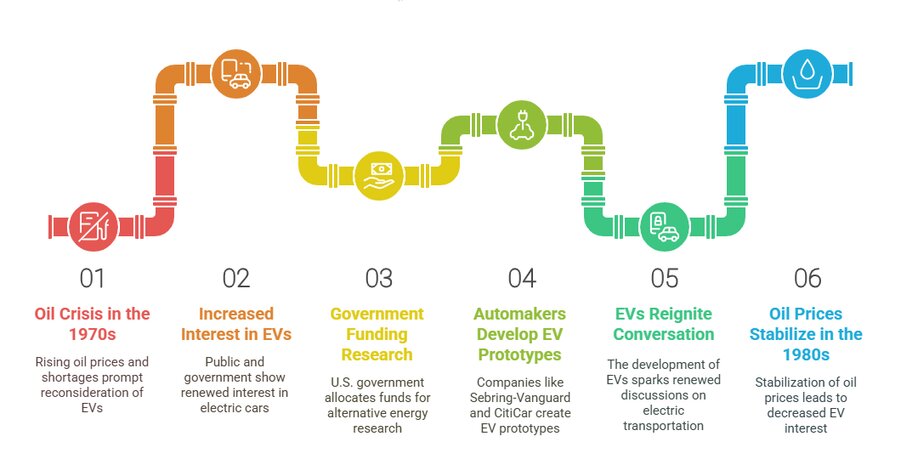
However, the most ambitious EV project of the 20th century came in the mid-1990s with General Motors’ EV1. Unlike the clunky EVs of previous decades, the EV1 was sleek, futuristic, and genuinely fun to drive. With a range of up to 100 miles, it represented a massive leap forward. GM leased the EV1 to customers in California and Arizona, and many drivers fell in love with it.
And then, inexplicably, GM pulled the plug, reclaiming and destroying most of the vehicles. Was the oil industry behind this? We may never know the full story, but the EV1’s short-lived existence became a symbol of what electric cars could have been – if only they’d been given a proper chance.
The Tesla Revolution (2000s–2010s)
For years, electric cars were seen as slow, short-range eco-boxes for tree-huggers. Then Tesla came along and flipped the script entirely.
In 2008, a Silicon Valley startup called Tesla Motors did what automotive giants had failed to do: build an electric car that people actually wanted. Their first vehicle, the Tesla Roadster, was a game-changer – a sleek, high-performance sports car that could travel over 200 miles on a single charge and accelerate from 0 to 60 mph in under four seconds.
People took notice. Suddenly, electric cars weren’t just an eco-friendly compromise; they were cool. The Roadster proved that EVs could be thrilling, luxurious, and capable of long-distance travel.
Then came the Model S in 2012, and everything changed. This all-electric luxury sedan combined power, efficiency, and futuristic technology unlike anything before it. With ranges exceeding 300 miles, a massive touchscreen interface, and industry-leading safety features, the Model S wasn’t just competing with other EVs – it was outperforming gasoline-powered luxury cars.
One of Tesla’s biggest innovations was its investment in lithium-ion battery technology. Unlike the bulky, inefficient lead-acid batteries of the past, lithium-ion cells allowed for much higher energy density, enabling cars to go farther on a single charge.
Tesla’s success sent shockwaves through the auto industry. Suddenly, legacy manufacturers realized they could no longer ignore EVs. The Nissan Leaf, launched in 2010, became the world’s first mass-market EV, while Chevrolet followed with the Bolt. Other automakers, from BMW to Volkswagen, started rolling out their own electric models.
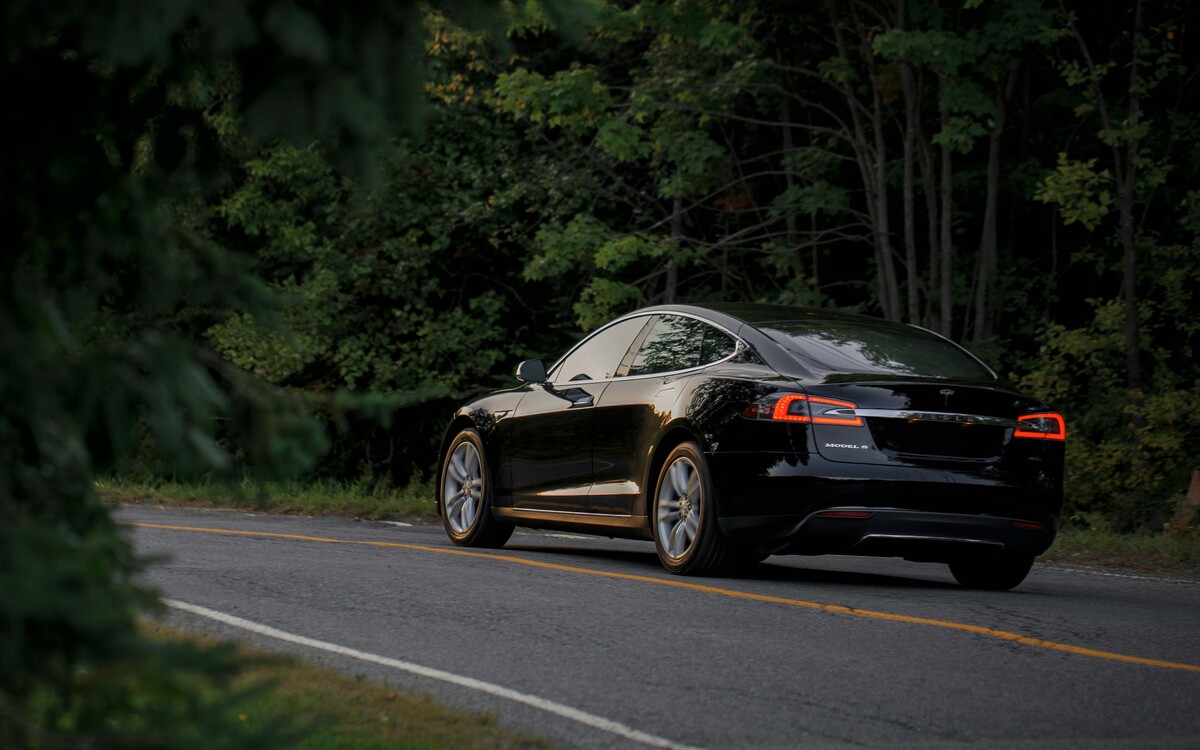
The Global EV Boom (2010s-Present)
For decades, electric vehicles were seen as futuristic novelties. Then, almost overnight, they became the future of transportation. What changed?
For starters, governments worldwide realized that if they wanted people to ditch their gas-guzzlers, they needed to make EVs more appealing. Tax credits, subsidies, and emissions regulations accelerated the transition. In the U.S., buyers could qualify for up to $7,500 in federal tax credits. Meanwhile, Norway took things to another level – offering tax breaks, toll exemptions, free parking, and even bus lane access to EV drivers. The result? Today, more than 80% of new car sales in Norway are electric.
Charging infrastructure rapidly improved, making EVs more practical than ever. Tesla led the charge with its Supercharger network, allowing drivers to replenish up to 200 miles of range in just 15 minutes. Home charging also became more widespread, with many EV owners installing Level 2 chargers in their garages for overnight charging.
China quickly emerged as the world’s largest EV market, thanks to aggressive government policies and a booming domestic industry. Companies like BYD, NIO, and XPeng became global players, challenging Tesla’s dominance. In the U.S., legacy automakers like Ford, GM, and Volkswagen poured billions into EV development. The launch of the Ford F-150 Lightning, an all-electric version of America’s best-selling truck, signaled a seismic shift in the market.
By 2023, global EV sales surpassed 14 million units, making up nearly 20% of all new cars sold worldwide. The message was clear: electric vehicles were no longer the future – they were the present.
Game-Changing EV Innovations
As demand for electric vehicles surged, so did innovation. From revolutionary batteries to AI-powered systems, the industry evolved at breakneck speed.
Battery technology has been the key to making electric cars mainstream. The earliest EVs relied on lead-acid batteries – heavy, inefficient power sources with laughably short ranges. Then came lithium-ion batteries, the game-changer that powered Tesla’s revolution. These batteries were lighter, more energy-dense, and capable of delivering hundreds of miles on a single charge.
Now, the next frontier is solid-state batteries – a technology that promises faster charging, longer lifespan, and significantly greater range. Unlike traditional lithium-ion batteries with their liquid electrolytes, solid-state batteries use solid material, making them safer and more efficient. Companies like Toyota, QuantumScape, and Samsung are racing to commercialize them, potentially enabling EVs with 1,000-mile ranges and ultra-fast charging times.
Charging technology has also evolved dramatically. Ultra-fast chargers can now add 100+ miles in just five minutes, while wireless charging promises seamless, cable-free energy replenishment. Some cities are even experimenting with dynamic wireless charging roads, where EVs can charge while driving.
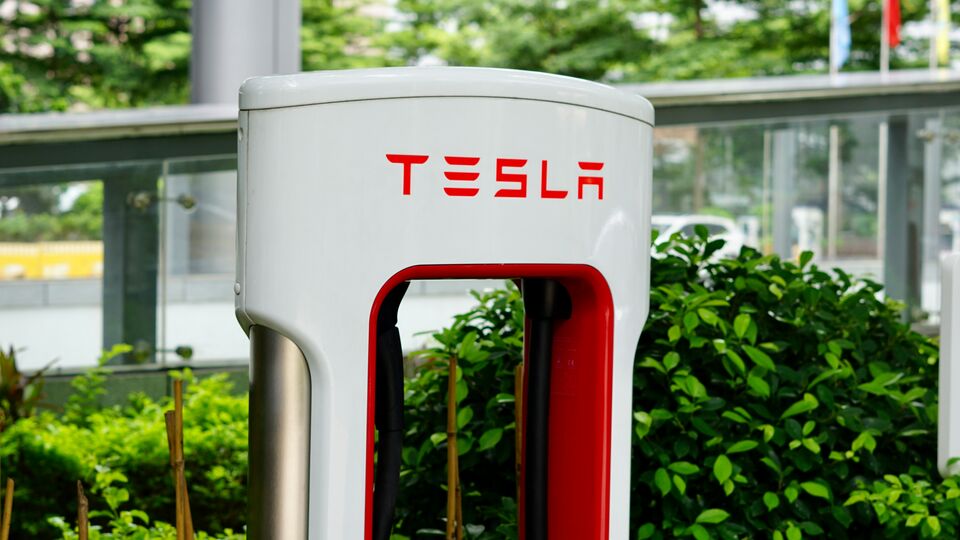
Beyond power systems, electric cars are becoming smart, connected machines. Tesla’s Autopilot and Full Self-Driving software brought autonomous driving into the mainstream, with AI-powered systems capable of handling highway driving, lane changes, and city streets. Features like over-the-air updates allow automakers to improve performance, fix bugs, and add new features remotely.
The line between car and computer is blurring, and the implications are revolutionary.
The Environmental Impact of EVs
The shift to electric vehicles is often hailed as the solution for reducing carbon emissions. But are EVs truly as green as they claim to be?
Electric vehicles produce zero tailpipe emissions, which is undeniably better than the constant pollution from internal combustion engines. However, their overall environmental impact depends on how the electricity that powers them is generated. In countries with clean energy grids, like Norway with its hydroelectric power, EVs have a minimal carbon footprint. Even in regions that rely on coal or natural gas, studies show that an average electric car produces about half the lifetime carbon emissions of a gasoline vehicle.
That said, battery production remains an environmental challenge. Manufacturing lithium-ion batteries requires mining materials like lithium, cobalt, and nickel, which can be resource-intensive and environmentally damaging. The industry is addressing these concerns through advanced recycling methods that can reuse up to 95% of a battery’s materials, as well as exploring second-life uses for old EV batteries in energy storage applications.
Are EVs perfect? No. But they’re a massive step in the right direction. And with improvements in battery technology, recycling, and clean energy adoption, their environmental benefits will only increase over time.

The Future of Electric Vehicles
The EV revolution is just getting started. With massive investments from automakers, breakthroughs in battery technology, and an ever-growing charging infrastructure, the future looks undeniably electric.
By 2030, experts predict there will be over 130 million EVs worldwide. Governments across the globe are setting ambitious targets, with some planning to ban new gasoline car sales entirely within the next decade. China, Europe, and the U.S. are leading the charge, but emerging markets are catching up quickly.
Solid-state batteries could be the key to the next revolution in electric vehicles. These advanced power sources promise:
✅ Faster charging – Imagine recharging your car in minutes instead of hours
✅ Longer lifespan – Less degradation over time
✅ Greater range – Some prototypes claim over 1,000 miles per charge
✅ Safer design – No risk of overheating or fires
Self-driving technology is evolving rapidly alongside electric powertrains. Companies like Tesla, Waymo, and other tech giants are pushing toward fully autonomous EVs, which could revolutionize urban mobility, reduce traffic accidents, and even eliminate personal car ownership in some cities.
Will gasoline cars become obsolete? Not overnight, but their days are numbered. Major automakers like General Motors and Volvo have already announced plans to go fully electric by 2035. Others, like Toyota, are investing in hybrid and hydrogen fuel cell technology as alternative paths to reducing emissions.
The biggest factor driving this transition isn’t government policy—it’s consumer demand. Once EVs offer better performance, longer range, and faster charging at a lower cost, there will be little reason to stick with outdated combustion engines.
Electric vehicles aren’t just the future—they’re the new normal. And that’s a charged-up reality we’re all going to have to get used to.
FAQ About the History of Electric Vehicles
When was the first electric vehicle invented?
The first crude electric vehicle was created by Scottish inventor Robert Anderson between 1832 and 1839. However, it was impractical due to non-rechargeable batteries. The first commercially viable electric vehicles appeared in the 1890s, with William Morrison’s electric carriage (1890) capturing public attention at the 1893 Chicago World’s Fair.
Why did electric vehicles lose popularity in the early 20th century?
Electric vehicles lost popularity primarily due to the mass production of affordable gasoline cars like the Ford Model T, which by the 1920s cost just $300—significantly less than EVs. Additional factors included the expansion of road networks (favoring longer-range gasoline cars), improved gasoline engine technology (including electric starters), and the widespread availability of cheap gasoline.
What was the GM EV1 and why was it significant?
The GM EV1, introduced in 1996, was the first modern purpose-built electric car from a major manufacturer. It was significant for its advanced design, offering up to 100 miles of range and a sleek, aerodynamic body. Despite customer enthusiasm, GM controversially discontinued the program in 2003, reclaiming and destroying most vehicles. This decision sparked conspiracy theories and highlighted the challenges EVs faced in gaining mainstream acceptance.
How did Tesla change the electric vehicle industry?
Tesla revolutionized the electric vehicle industry by proving EVs could be desirable, high-performance vehicles rather than just eco-friendly compromises. The Tesla Roadster (2008) offered unprecedented range (200+ miles) and performance, while the Model S (2012) combined luxury, technology, and practicality. Tesla’s innovations in battery technology, charging infrastructure (Supercharger network), and over-the-air software updates forced traditional automakers to take electric vehicles seriously.
Are electric vehicles truly better for the environment than gasoline cars?
Electric vehicles are generally better for the environment than gasoline cars, producing about half the lifetime carbon emissions of comparable gas vehicles, even accounting for battery production. Their environmental impact varies depending on electricity sources—EVs charged with renewable energy have a significantly smaller carbon footprint than those powered by coal-generated electricity. While battery production does raise environmental concerns regarding resource extraction, the industry is developing better recycling methods and more sustainable battery technologies to address these issues.
